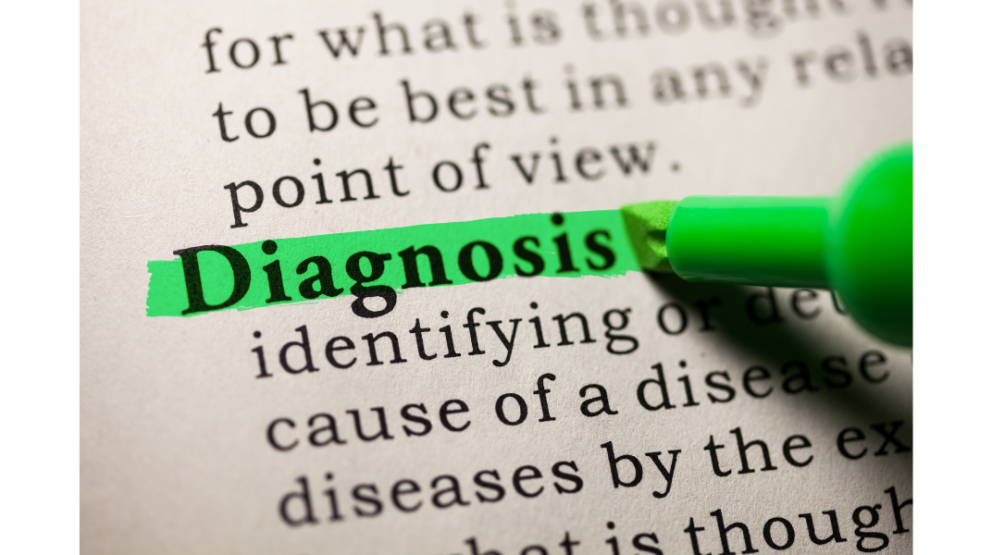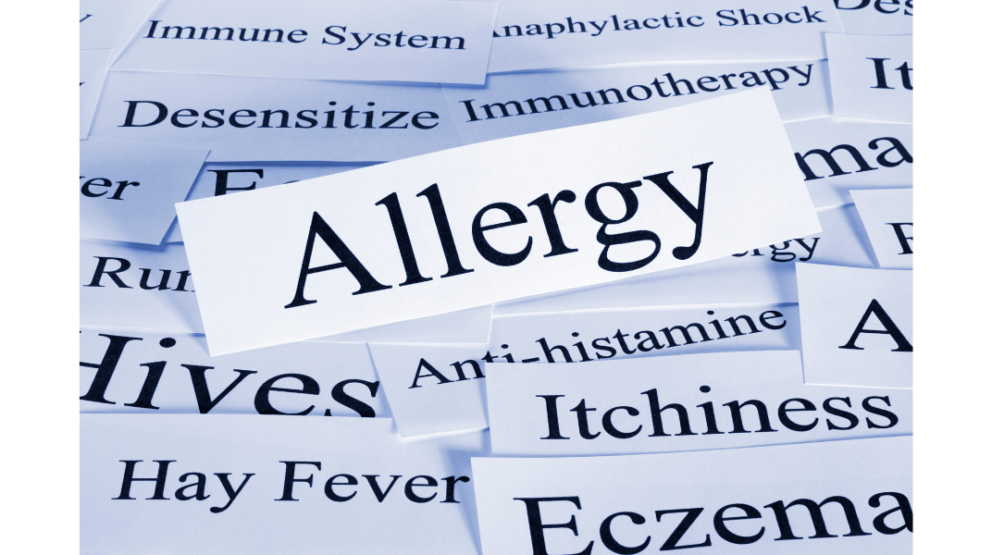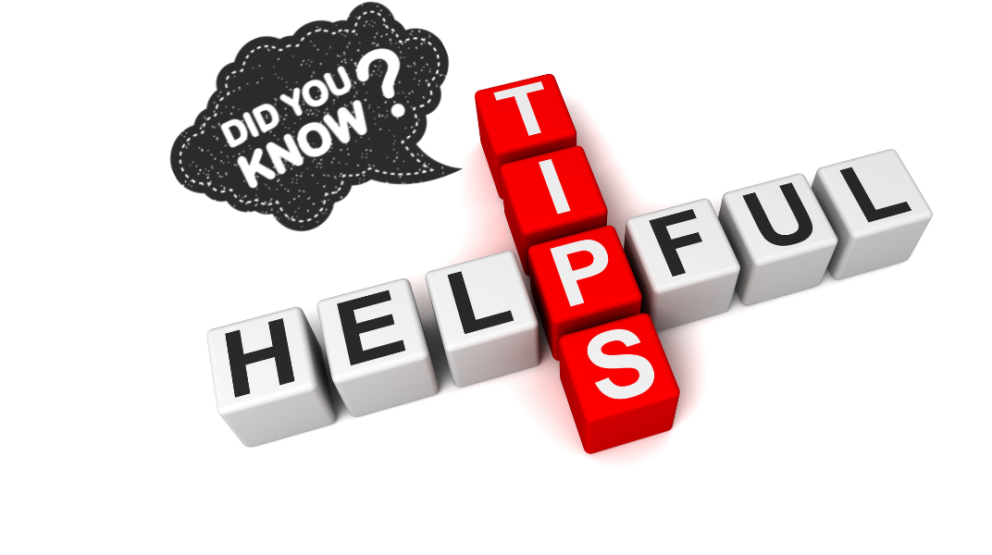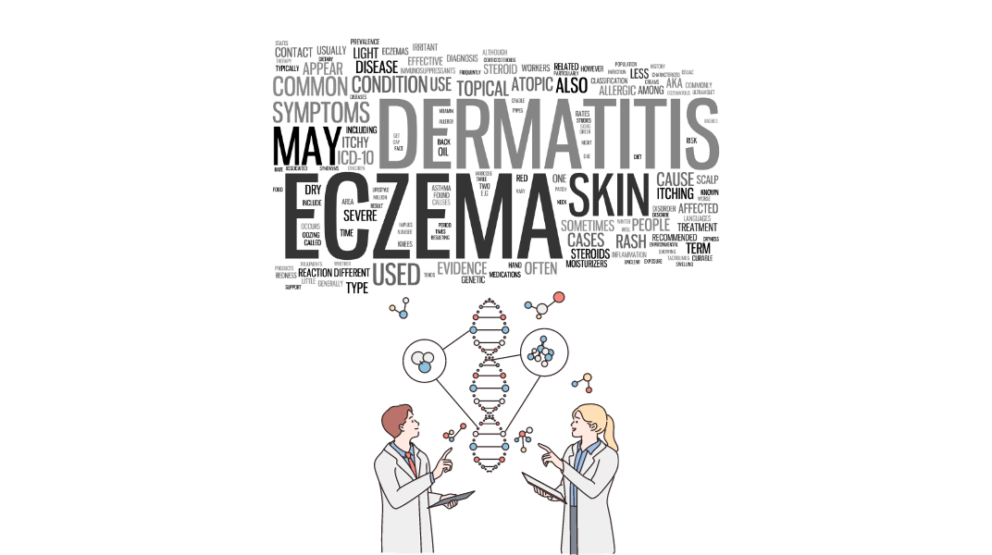Table of Contents:
1.1 Overview
1.2 Importance of Understanding Eczema
2.1 Definition
2.2 Types of Eczema
2.3 Prevalence and Statistics
2.4 Risk Factors
2.5 Common Misconceptions
Chapter 3 – Symptoms of Eczema
3.1 Itchiness
3.2 Dryness and Scaling
3.3 Redness and Inflammation
3.4 Oozing and Crusting
3.5 Thickening of the Skin
3.6 Emotional Impact
4.1 Genetics and Family History
4.2 Environmental Factors
4.3 Immune System Dysfunction
4.4 Allergies and Irritants
4.5 Microbial Infections
4.6 Psychological Factors
Chapter 5 – Diagnosis of Eczema
5.1 Medical History and Physical Examination
5.2 Patch Testing
5.3 Skin Biopsy
5.4 Differential Diagnosis
5.5 Working with Dermatologists
6.1 Avoiding Triggers
6.2 Skincare Routine
6.3 Moisturisers and Emollients
6.4 Topical Corticosteroids
6.5 Antihistamines and Anti-itch Medications
6.6 Systemic Medications
6.7 Phototherapy and Light Therapy
6.8 Complementary and Alternative Medicine
6.9 Lifestyle Changes
Chapter 7 – Eczema in Infants and Children
7.1 Infantile Eczema (Atopic Dermatitis)
7.2 Pediatric Eczema Management
7.3 Impact on Quality of Life
7.4 Transition to Adulthood
Chapter 8 – Eczema and Allergies
8.1 Atopic March
8.2 Allergic Contact Dermatitis
8.3 Food Allergies and Eczema
8.4 Treating Eczema and Allergies
Chapter 9 – Eczema Triggers and Prevention
9.1 Common Triggers
9.2 Environmental Allergens
9.3 Irritants and Chemical Sensitisers
9.4 Managing Triggers in Daily Life
9.5 Prevention Strategies
Chapter 10 – Emotional and Psychological Impact
10.1 Eczema and Mental Health
10.2 Coping with Emotional Stress
10.3 Support Systems and Resources
Chapter 11 – Living with Eczema: Practical Tips and Strategies
11.1 Clothing and Fabric Choices
11.2 Bathing and Showering
11.3 Sleeping Tips
11.4 Managing Flare-Ups
11.5 Traveling with Eczema
11.6 Dealing with Scratching
Chapter 12 – Eczema Research and Advances
12.1 Current Research Studies
12.2 New Treatment Approaches
12.3 Potential Future Developments

Chapter 1 – Introduction
1.1 Overview
Eczema is a common chronic skin condition characterised by itchy, inflamed, and irritated skin. It can range from mild to severe and usually involves periods of flare-ups followed by remission. Eczema affects millions of people and is increasingly prevalent, especially in children. This guide provides a comprehensive understanding of eczema, including its symptoms, underlying causes, diagnosis, and the various treatment options available. It also covers practical tips for living with eczema, new research, and potential future advances in managing this condition. By learning about the nature of eczema and taking a multi-pronged approach to care, it is possible to successfully control symptoms, prevent flare-ups, and improve quality of life.
1.2 Importance of Understanding Eczema
Because eczema is a complex condition with no known cure, having a strong understanding of its various aspects is critical for proper management. Getting familiar with the wide range of symptoms can help with early diagnosis and detection of flares before they worsen. Insight into potential triggers can empower patients to make lifestyle adjustments to avoid flares. Knowledge of the available treatments, their pros and cons, and proper usage techniques is key to developing an optimal care regimen. Understanding the psychosocial impact of eczema can inform decisions on mental health support and coping strategies. Ongoing research provides hope for better treatments. Overall, comprehensive knowledge lays the foundation for taking control of eczema.

Chapter 2 – What is Eczema?
2.1 Definition
Eczema, also known as atopic dermatitis, is a condition that causes skin inflammation and irritation. The most common symptoms are dry, itchy skin and rashes. It is characterised by periods of flare-ups interspersed with periods of remission when symptoms improve or disappear. Eczema is not contagious. It is related to allergies and hyperactive immune responses in genetically predisposed individuals. Other factors like environmental irritants and stress can trigger flares as well.
2.2 Types of Eczema
There are several types of eczema including atopic dermatitis, contact dermatitis, dyshidrotic eczema, nummular eczema, seborrheic dermatitis, and stasis dermatitis. Atopic dermatitis is the most common. Contact dermatitis occurs after the skin touches irritants or allergens. Dyshidrotic eczema causes blisters on palms and soles. Nummular eczema involves coin-shaped lesions. Seborrheic dermatitis causes flaky patches. Stasis dermatitis affects lower legs.
2.3 Prevalence and Statistics
According to the World Allergy Organisation, around 15-20% of kids and 1-3% of adults worldwide deal with this skin condition.
In more industrialised nations especially, eczema rates have been steadily increasing over the past few decades. It’s really become a major public health issue. No one totally knows why more people are getting eczema, but it’s definitely on the radar of health researchers.
The most widespread type is called atopic dermatitis, which frequently starts in infancy and early childhood. Lots of babies get itchy, scaly patches that come and go. Many outgrow it by toddlerhood thankfully, but for some, eczema sticks around into adulthood. It’s frustrating when you can’t shake childhood eczema as an adult.
The bottom line is eczema is super common all over the world. Scientists are working to figure out why rates are rising in certain countries. Although it often starts young, eczema can persist lifelong for millions of patients. More research and treatment options are needed to help people manage this stubborn condition.
2.4 Risk Factors
Genetics play a major role, with over 30 genes identified. People with a family history have higher risk. Other risk factors include dry skin, defects in skin barrier, immune dysregulation, obesity, stress, urban residence, and exposure to environmental irritants. Young children are at highest risk. Onset is most common before age 5 and can continue into adulthood. While eczema affects people of all races, fair skinned individuals tend to get more severe symptoms.
2.5 Common Misconceptions
Despite its prevalence, eczema is surrounded by misconceptions. Eczema is not an infection, so it cannot be spread from person to person. It is also not caused by diet or hygiene, though these can trigger flares. Getting eczema is not the fault of the patient. While allergies are related, not all patients have classic environmental allergies. There is also no cure for eczema – it is a chronic condition requiring ongoing management.
Getting a solid handle on what exactly eczema is and how it works is super important for providing meaningful care and support to all the people dealing with this frustrating skin condition. Understanding the different types, who gets it, how it shows up, and myths about it gives doctors, researchers, and advocates a foundation to build upon.
With this comprehensive knowledge, medical and health communities can collaborate to create specific treatments, move research forward, and address the significant emotional toll eczema takes. Busting myths and boosting awareness helps make a society that’s more empathetic and informed about eczema patients.
Knowledge is power when it comes to eczema. It allows people with this condition to feel understood, supported, and equipped to take control of their skin health journey as much as possible. While we still have a long way to go, a deep understanding of all aspects of eczema brings us one step closer to improved quality of life for the millions with dry, itchy, irritated skin.

Chapter 3 – Symptoms of Eczema
Eczema is complicated – it shows up in a bunch of different ways, affecting more than just the skin. Really getting the full picture of the various symptoms is key to understanding how much eczema can disrupt someone’s life day-to-day, both physically and emotionally.
The rashes, dryness, itching, redness, and scaling are obvious signs of eczema. But it also impacts sleep, concentration, self-esteem, and mental health for many patients. The constant skin irritation and need to scratch can be frustrating and embarrassing. Kids with eczema may feel isolated or “different.”
By recognising all the ways eczema manifests and how it makes people feel, not just how it looks, healthcare providers, families, friends, schools, and employers can offer meaningful support. Taking both the physical symptoms and emotional aspects into account leads to more compassionate care. Eczema is clearly more than a superficial skin condition – it takes a toll on the whole person. Awareness of this reality is so important.
3.1 Itchiness
Itchiness (pruritus) is the most common and disruptive symptom. Eczema is often described as “the itch that rashes” rather than “the rash that itches”. Itchiness can be localised or generalised across the body. Intense itching and scratching can damage the skin and cause open sores, which can increase risk of infections.
3.2 Dryness and Scaling
A lack of moisture in the outer layer of skin causes dryness and scaling or flaking. Skin lacks the protective oils and becomes easily irritated. Dry skin is also more prone to cracking, which can allow irritants in and worsen inflammation. Gentle daily moisturisation is key to preventing dryness.
3.3 Redness and Inflammation
Red, inflamed patches are characteristic of eczema. In lighter skin, the redness takes on a pink hue. Long-term uncontrolled eczema can lead to thickened, leathery skin from chronic inflammation. Keeping inflammation under control is vital.
3.4 Oozing and Crusting
In severe eczema, the skin can ooze clear fluid and form yellow crusts or scabs from chronic scratching. This leaves the skin vulnerable to bacterial infection which requires treatment with oral antibiotics in addition to topical steroids. Preventing ooze and crusts reduces infection risk.
3.5 Thickening of the Skin
Chronic, uncontrolled eczema causes the skin to thicken from excessive inflammation. This is known as lichenification and causes the skin to become leathery and rough textured with accentuated markings. Keeping eczema under control minimises thickening.
3.6 Emotional Impact
For some patients, the emotional burden is the most difficult aspect. Poor self-esteem, social isolation, depression, and anxiety are common due to the visible symptoms and unpredictable flares. Developing coping strategies and finding community support can help overcome the emotional challenges.
The symptoms that come with eczema can feel never-ending and frustrating – from the constant itch and dryness to painful cracking, oozing, and thickened skin. To make matters worse, eczema is super visible, so it can really hurt your self-esteem. There’s a complex relationship between the physical and emotional sides of this condition.
It’s so important for doctors, caregivers, friends and the public to understand eczema goes beyond just a skin rash. It takes recognising the many layers of symptoms and challenges that patients deal with everyday. Increased awareness and empathy helps create an environment where people with eczema feel supported and able to take control where they can.
While eczema symptoms can feel relentless, having the right care and support empowers patients to develop resilience and still find ways to enhance their quality of life. Making sure the full eczema picture is understood leads to more comprehensive treatment and encouragement for those confronting this frustrating condition.

Chapter 4 – Causes of Eczema
Where eczema comes from exactly is complicated – it’s a mix of different genetic and environmental things together. There’s no one single cause that makes someone get eczema. Understanding all the potential pieces of the puzzle is important to figure out why and how this chronic skin condition develops in the first place.
The genes you inherit from your parents can make you more prone to eczema, but they don’t seal your fate. Outside factors like irritants, allergens, microbes, and stress also get thrown into the mix with your genes. It’s a complex interplay that science is still trying to unravel when it comes to the origins of eczema.
Getting clarity on all the potential contributing factors can provide clues to better prevent and manage this frustrating skin condition. While the eczema puzzle is intricate, each piece we understand brings us one step closer to solutions.
4.1 Genetics and Family History
Eczema has a strong hereditary component. Over 30 genes have been associated with eczema and atopic disorders. Children with one or two parents with eczema are more likely to develop the condition. However, environmental triggers also play an important role in manifesting eczema in genetically predisposed individuals.
4.2 Environmental Factors
Local environment has a major effect on eczema. Dry, cold climates are more problematic. Air pollution and tobacco smoke can exacerbate eczema. Certain chemicals like soaps, detergents, and fabrics can act as irritants. House dust mites, pollen, and dander are common indoor allergens. Hard water, due to mineral content, may worsen eczema.
4.3 Immune System Dysfunction
Eczema involves hyperactivity of the immune system against otherwise harmless environmental factors. This leads to increased inflammation and overreaction to potential allergens or irritants. Those with eczema lack proper immune regulation, causing characteristic flare-ups.
4.4 Allergies and Irritants
While classic environmental allergies are involved in some cases of eczema, many patients test negative. However, they may still react to these allergens (e.g. dust, pollen) when the skin barrier has been compromised, leading to flare-ups. Non-allergenic substances can also irritate the skin and worsen inflammation.
4.5 Microbial Infections
Bacterial infections with Staphylococcus aureus are especially common. Colonisation and infections alter the microbiome and exacerbate inflammation. Other microbes like dermatophytes and Malassezzia may play a role. Viruses, including possibly eczema herpeticum, contribute to some cases as well.
4.6 Psychological Factors
Mental health conditions like stress, anxiety and depression do not cause eczema but can severely worsen symptoms. This mind-skin connection means that managing psychological aspects is an important part of controlling flare-ups. Psychological therapy may help some patients.
What causes someone to develop eczema is complex – it’s a total mix of genes, environment, immune issues, allergies, bugs, and psychology. There’s no single bad guy behind eczema, which makes finding treatments tricky.
Knowing all the potential players involved is so important for helping eczema patients though. It allows doctors to create tailored plans targeting genetic risks, reducing environmental triggers, rebalancing the immune system, and addressing the mental health side.
By looking at the whole picture when it comes to eczema causes, instead of a one-size-fits-all approach, care can be more individualised to each patient’s unique situation. Research also benefits from understanding the different pieces of the eczema puzzle. Bit by bit, science is learning how all these factors intertwine and finding new ways to manage this frustrating and complex condition.

Chapter 5 – Diagnosis of Eczema
Getting an accurate eczema diagnosis is so important for finding the right treatments. This chapter looks at the different tests and steps docs, especially dermatologists, take to properly diagnose eczema and rule out other skin conditions.
A comprehensive evaluation from an experienced professional lays the foundation. Going over your full medical history, doing a physical exam of your skin, running any needed tests like allergy patch testing or skin biopsies, and determining if other conditions could be to blame is key.
There’s no one perfect diagnostic tool for eczema. Making sure your doctor takes a thorough, multifaceted approach ensures the best shot at pinpointing eczema as the cause of your symptoms so you can move forward with effective management. Proper diagnosis gets you off on the right foot.
5.1 Medical History and Physical Examination
A dermatologist will perform a medical interview asking about symptoms, family history, response to previous treatments, and potential triggers. They will examine skin lesions and distinguish eczema from other skin disorders. Photographs over time help monitor progression. Discussing impact on quality of life is also important.
5.2 Patch Testing
Patch testing helps identify whether allergens like metal, rubber, foods, or chemicals cause contact dermatitis flares. Potential allergens are placed on the back for 48 hours. Reactions are graded based on appearance of the eczematous patches. Common allergens include nickel, cosmetics, topical antibiotics and corticosteroids.
5.3 Skin Biopsy
A skin biopsy may be taken to examine skin tissue under the microscope. This helps rule out other conditions like psoriasis or skin cancer. Biopsies also allow analysis of immune cells within lesions. However, there are no definitive microscopic findings in eczema. Biopsies are not always necessary for diagnosis.
5.4 Differential Diagnosis
Eczema needs to be differentiated from other similar skin disorders like psoriasis, seborrheic dermatitis, contact dermatitis. Eczema has distinctive clinical features but biopsy or lab tests may be needed sometimes for confirmation. Keeping detailed records helps the dermatologist make an accurate differential diagnosis.
5.5 Working with Dermatologists
Dermatologists are specially trained to diagnose and treat various skin conditions including eczema. Getting an accurate diagnosis lays the foundation for proper treatment. Ongoing partnership with a dermatologist helps monitor progression and determine optimal care. Good communication about symptoms, treatments tried, and lifestyle factors is key.
Figuring out if someone has eczema takes looking at the full picture – their medical background, the exact symptoms they’re showing, and sometimes extra tests like patch testing or skin samples. Making sure eczema is the cause, and not something else like psoriasis or dermatitis, is so important to get the right treatment.
Having a dermatologist take a close inspection and run needed tests can really provide clarity. These skin experts have the training to accurately diagnose eczema and come up with customised treatment plans. Patients working hand-in-hand with their healthcare team, especially dermatologists, leads to better care and outcomes.
Accurate eczema diagnosis takes time and multiple factors into account, but it puts patients on the right path to controlling symptoms and feeling better overall. With the proper diagnosis, patients can feel confident taking steps to improve their skin health and get relief.

Chapter 6 – Managing Eczema
Dealing with eczema takes a whole toolbox of strategies to keep it under control. Because eczema is complicated with so many triggers and factors at play, finding the right combination unique to each patient is key.
Avoiding your personal triggers, doing regular skin care to boost your moisture barrier, using the right medication regimen prescribed by your doctor, and making lifestyle adjustments to reduce flares can all work together to tame eczema. There’s no one perfect treatment, but tailoring a comprehensive plan specific to your situation and symptoms can absolutely make a difference.
It may take time to figure out your custom eczema management plan, but taking a multidimensional approach provides the best chance to minimise outbreaks and live more comfortably. Don’t get discouraged trying to pinpoint what works for you – with the right partnership between you and your care team, the endless eczema cycle can be broken.
6.1 Avoiding Triggers
Once specific triggers have been identified, avoiding or minimising exposure is key to prevent flares. This may involve reducing house dust, getting rid of carpets, washing bedding in hot water, and making lifestyle adjustments. Keeping a trigger journal helps pinpoint problem areas. Create an eczema-friendly environment.
6.2 Skincare Routine
Develop a proper skincare regimen including gentle cleansing, daily moisturising, sealing dampness with an occlusive, wet wraps or soak and smear technique, oils, and anti-itch creams. Skin should always feel well-hydrated. Sensitive skin care products developed for eczema are ideal. Keep nails trimmed to prevent skin damage from scratching.
6.3 Moisturisers and Emollients
Liberal use of moisturisers is the mainstay of eczema management. Thicker creams and ointments work better than lotions and gels. Products containing ceramides, hyaluronic acid and colloidal oatmeal are ideal for skin barrier repair. Petrolatum-based products are highly effective occlusive. Apply frequently even when skin is clear.
6.4 Topical Corticosteroids
These are the most common pharmaceutical treatment for minimizing inflammation and reducing itchiness. They come in different potencies based on severity of eczema. Proper usage guidelines must be followed to avoid side effects like skin thinning. Newer topical calcineurin inhibitors like Elidel are also an option.
6.5 Antihistamines and Anti-itch Medications
Oral antihistamines like cetirizine or hydroxyzine help control itching, especially if it disrupts sleep. Topical anti-itch creams with pramoxine or camphor can provide short-term relief. Phototherapy may also help relieve generalised itchiness. Reducing scratching is vital to prevent skin damage.
6.6 Systemic Medications
For severe cases, oral or injectable medications may be prescribed. Common options include cyclosporine, methotrexate, azathioprine, and the targeted biologic agent dupilumab. These work by suppressing the overactive immune response but have significant side effects with long-term use.
6.7 Phototherapy and Light Therapy
Exposure to different wavelengths of ultraviolet and visible light, alone or in combinations, can help resolve inflamed eczema lesions and reduce itching. This is usually done in a dermatologist’s office but handheld home devices are also available. Side effects include increased skin cancer risk with UV light.
6.8 Complementary and Alternative Medicine
Many eczema patients find relief using natural approaches like dietary modifications, probiotics, vitamins, Chinese herbs, evening primrose oil, oregano oil, and tea tree oil. Acupuncture and hypnosis may also provide symptom relief. However, rigorous studies proving efficacy are lacking.
6.9 Lifestyle Changes
Diet, exercise, and stress management modifications can help reduce flare ups. Elimination diets may help identify problematic foods. Moderate exercise promotes circulation and skin health. Yoga, meditation, and counseling can mitigate psychological triggers and stress. Making suitable lifestyle adjustments tailored to each patient is important.
Caring for eczema takes a whole-person approach – avoiding triggers, keeping up good skincare habits, using medications properly, and making lifestyle changes that help your skin. Working closely with your dermatologist to create a treatment plan based on proven methods gives you your best shot at relief.
On top of traditional treatments, natural options and self-care techniques can provide additional ways to manage eczema flares and itchiness. When patients feel equipped with the right tools and support, eczema becomes less intimidating. There is hope for leading a comfortable life despite this frustrating chronic condition.
While eczema requires time and effort, a multifaceted treatment plan tailored to your situation can absolutely make a difference. With the right education, commitment, and medical partnership, you can take control of your eczema instead of letting it control you.

Chapter 7 – Eczema in Infants and Children
Eczema can be extra tricky when it pops up in babies and kids, especially atopic dermatitis. The symptoms and best treatments can be different from adults with eczema. Realising these unique aspects is so important for helping kids properly manage their eczema.
Knowing how to recognise eczema in infants, finding child-friendly skin care routines, and using the right strength topical steroids leads to better care. We also have to understand how eczema can affect a child’s physical health, emotions, and social life. Moreover, as they eventually become teens and adults, preparing kids to take charge of their own eczema care is crucial.
Eczema tends to first show up early in life. Paying attention to the particular challenges kids face sets them up for success in controlling this chronic condition now and into adulthood.
7.1 Infantile Eczema (Atopic Dermatitis)
Eczema often starts in infancy around 2-4 months old. Babies with infantile eczema develop red, weepy rashes on the face, scalp, chest, back, arms, and legs. Gentle skincare, wet wraps, and mild topical steroids are the main treatments. Most children outgrow this by age 2 but some have persistent eczema into childhood.
7.2 Pediatric Eczema Management
Managing eczema properly in children aims to control symptoms, allow normal activities like play and sleep, and prevent skin infections. Topical steroids and moisturisers form the basis of treatment. Parents should learn proper application techniques. Keeping the child’s nails short and having them wear mittens reduces skin damage from scratching.
7.3 Impact on Quality of Life
Eczema can negatively affect a child’s physical health, emotional wellbeing, and social development. Chronic itching and discomfort from eczema lesions can hinder sleep and concentration in school. Parents also suffer from lack of sleep and emotional distress seeing their child in pain. Supporting the child’s psychosocial needs is imperative.
7.4 Transition to Adulthood
As children become teens and young adults, management responsibilities shift from parents to self. Creating awareness, teaching coping strategies, and encouraging self-advocacy equips patients for this transition. Having access to individualised medical care and community support continues to be important in adulthood.
Eczema shows up differently in kids compared to adults, so the care has to be tailored for each age. Babies often get it early on, requiring extra gentle skin routines and mild treatments selected just for their needs. Working closely with doctors and parents gets infant eczema under control.
As kids grow, managing eczema has to evolve too – using child-safe products, monitoring growth effects of steroids, considering emotional impacts. Building confidence and habits from an early age prepares them to handle eczema more independently later as teens and adults.
Understanding how eczema changes across the childhood years allows families and doctors to provide compassionate support and appropriate care. Despite the challenges of growing up with eczema, having the right foundation empowers kids to take control and live comfortably with this condition at any age.

Chapter 8 – Eczema and Allergies
Eczema and allergies have a super complex relationship that researchers are still trying to unravel. The connections between them are so important though for treating both conditions.
The concept of the “atopic march” explains how eczema as a baby can lead to food allergies, asthma, and seasonal sniffles later on for some people. Allergic contact dermatitis shows how exposure to things you’re allergic to, like metals or makeup, can trigger eczema flares. Food allergies are another huge eczema trigger for kids.
Understanding how intricately eczema and allergies are intertwined points to the need to address them together. Allergy testing, avoiding triggers, medications that target allergic inflammation – this comprehensive approach results in better control of itchy rashes, congestion, coughing, and more. The eczema-allergy connection holds a key for better health.
8.1 Atopic March
Eczema is closely associated with food allergies, asthma, and seasonal environmental allergies, together known as atopic disorders. These conditions often develop sequentially in childhood in a typical progression called the atopic march. Managing eczema early and properly may help prevent progression to other atopic diseases later in life.
8.2 Allergic Contact Dermatitis
When eczema patients develop hypersensitivity to contact allergens like metals, fragrances, topical products, and textile dyes, this leads to allergic contact dermatitis. Patch testing is done to identify triggers, and strict avoidance prevents recurrent reactions. Common contact allergens include nickel, neomycin, and rubber chemicals.
8.3 Food Allergies and Eczema
Around 30% of children with severe eczema have food allergies, most commonly eggs, milk, peanuts, tree nuts, soy, wheat and shellfish. These foods provoke immune and inflammatory responses, aggravating eczema. Allergy testing identifies problem foods to eliminate from the diet while nutritional needs are met.
8.4 Treating Eczema and Allergies
An integrated treatment approach works best for co-existing eczema and allergies. Avoiding confirmed allergens and irritants reduces flares while topical steroids, moisturisers and antihistamines control symptoms. Allergen immunotherapy may be an option. Dupilumab is a targeted biologic that treats both eczema and associated allergies.
The link between eczema and allergies is super fascinating and important for skin and immune health. The concept of the “atopic march” shows why handling eczema properly starting early in childhood may prevent allergies from developing down the road. Contact dermatitis highlights how exposure to things you’re allergic to can directly trigger eczema flares on the skin.
Food allergies are another huge contributor to eczema symptoms for many folks. Identifying your personal trigger foods and removing them from your diet helps get rashes under control. Doctors treating eczema have to look at the whole picture – not just the skin, but related allergies too.
Care plans that deal with both eczema and allergies together using lifestyle changes, medications, and allergy management lead to better outcomes. Knowing these conditions are so closely tied allows for more customised treatment. While eczema and allergies can feel frustrating and inseparable at times, understanding the link is the first step in taking control.

Chapter 9 – Eczema Triggers and Prevention
With so many potential triggers, keeping eczema flares at bay can feel like an endless battle. But identifying your personal triggers and learning to avoid them is so important for getting breakouts under control.
Common environmental allergens like pollen and pet dander can kick the immune system into overdrive and worsen eczema. Chemicals, fragrances, and fabrics that irritate the skin also unleash the vicious itch-scratch cycle. Being aware of things that tend to aggravate eczema allows you to take steps to prevent exposure.
Reading labels, using protective equipment, having air purifiers, minimising harsh chemicals – these proactive measures create an environment less likely to stir up symptoms. While eczema triggers can feel unavoidable, arming yourself with knowledge and prevention strategies helps you feel empowered rather than defeated in your skin health journey.
9.1 Common Triggers
Certain foods, environmental factors, microbes, and substances that contact the skin can trigger eczema flares. Common triggers include eggs, peanuts, soy, dairy, gluten, dust mites, pollen, animal dander, cigarette smoke, perfumes, chlorine, wool, nickel and chemicals. Keeping a trigger journal helps identify problem areas.
9.2 Environmental Allergens
Dust mites, pet dander, mold spores and seasonal pollens entering via air or contact provoke immune activation worsening eczema. Minimising these allergens through dusting, air filters, washing bedding on hot settings, removing carpets and stuffed toys can help. Keep pets out of bedrooms.
9.3 Irritants and Chemical Sensitizers
Soaps, detergents, fabric softeners, dryer sheets, cleaning products, solvents, chlorine, cigarette smoke, and fragrances act as irritants disrupting skin barrier function in those with eczema. Other chemicals like nickel and preservatives cause allergic sensitisation and contact dermatitis. Avoiding exposure is key.
9.4 Managing Triggers in Daily Life
Reading product labels helps avoid problem ingredients like fragrances, lanolin, quaternium compounds. Choose hypoallergenic, fragrance-free skincare and laundry products suitable for sensitive skin. Dust and vacuum regularly. Install air purifiers and humidifiers. Avoid overheated rooms which dry out skin. Wear gloves for wet work.
9.5 Prevention Strategies
While eczema cannot always be prevented, minimising triggers and using proactive skin care from infancy might help reduce incidence. Moisturising daily, bathing appropriately, wearing soft natural fabrics, maintaining optimal humidity and temperature, and managing stress can support skin health and be a calming influence on eczema symptoms.
If you have eczema related to your job, it’s really important to keep up good hygiene habits at work, use any protective gear provided, and talk to your employer about ways to reduce exposure to stuff that irritates your skin. No one wants to deal with constant skin issues because of their career. Ask about switching duties or using different products if certain chemicals or materials make your eczema worse.
For people with eczema triggered by allergies, seeing an allergist or immunologist to create a customised immunotherapy plan can be super helpful. The goal is to gradually make you more tolerant of problem allergens and reduce the severity of your eczema symptoms. Programs like allergy shots are one option.
No matter what treatments your doctor recommends for your eczema – creams, oral meds, light therapy etc. – be sure to use them as prescribed. It can be annoying having to apply ointments every day or give up certain foods, but sticking to your treatment plan is really key to keep your skin under control. Follow up regularly with your dermatologist or allergist too, so they can monitor your progress and tweak treatments as needed. Working as a team with your healthcare providers gives you the best chance of success in managing eczema symptoms.

Chapter 10 – Emotional and Psychological Impact
Dealing with eczema takes a huge toll mentally and emotionally – way more than just physical skin issues. The constant itching, appearance of rashes, discomfort of cracking skin, and embarrassment can lead to some really tough feelings. Eczema definitely affects more than just the surface.
Coping strategies to handle the stress, finding community support, seeing a therapist – these can make a huge difference for your mental health. Keeping eczema from negatively affecting your self-esteem takes effort. But knowing you’re not alone and have resources to deal with the frustration and isolation makes things feel more manageable.
While eczema can seriously impact your psyche, acknowledging this reality is the first step to building resilience. Don’t underestimate the power of support systems, self care, and mental health tools to help you push through the difficult days and come out stronger.
10.1 Eczema and Mental Health
Living with eczema often takes an emotional toll. Itching, discomfort, poor sleep, and social embarrassment lead to frustration, anxiety, depression and lowered self-esteem in both children and adults with eczema. Stress in turn exacerbates flares, creating a vicious cycle. Supporting mental health is an important part of eczema management.
10.2 Coping with Emotional Stress
Counseling, support groups, stress management techniques, self-care, and targeted medications can help cope with eczema-related emotional difficulties. Having an understanding social network is also beneficial. Focusing on aspects within one’s control instead of being overwhelmed by uncontrollable flares promotes resilience.
10.3 Support Systems and Resources
Numerous in-person and online resources provide eczema education, lifestyle tips, community support and coping advice. Support groups facilitate sharing experiences and solutions. Mental health professionals offer counseling tailored to eczema-related issues. National Eczema Association and other foundations also fund eczema research and awareness.
Realising the toll eczema takes on your emotions and mental health is so important for building resilience against the ups and downs. Taking proactive steps to cope with the stress, lean on loved ones, and use available resources helps strengthen your overall wellbeing.
Despite the challenges of living with a chronic skin condition, focusing on both the physical symptoms and emotional side of eczema leads to more complete care. With the right support systems and self-care habits, it is possible to find hope and enjoyment in life even during the difficult flares.
The psychological impact of eczema cannot be ignored – but it also does not have to control your life. Seeking tools to foster emotional health and embracing your inner strength empowers you to take on eczema with confidence rather than defeat. The journey may be trying at times but you have the ability to overcome.

Chapter 11 – Living with Eczema: Practical Tips and Strategies
Figuring out how to live your best life with eczema takes picking up some handy real-world tips. Little changes to your daily habits can make a big difference in keeping breakouts and itchiness under control.
Choosing soft, breathable fabrics and washing new clothes gently prevents skin irritation. Short, lukewarm showers with eczema-friendly wash and immediately applying creams seals in moisture. Special sheets, sleepwear, bedroom humidity control, and anti-itch creams allow better rest.
Having rescue plans for flare ups, eczema care products while traveling, and resisting scratching reduces symptoms and damage to your skin. With the right lifestyle tweaks and strategies, eczema can stay in the background instead of taking center stage. Don’t hesitate to try some new eczema hacks to smooth out your days.
11.1 Clothing and Fabric Choices
Avoid rough, scratchy fabrics like wool. Cotton and silk are better choices as they allow airflow and minimise sweating. Purchase pre-washed clothes and wash all new clothes before wearing. Remove tags in necklines or sleeves. Seamless designs prevent skin irritation. Layer smooth linens or cottons under wool for warmth in cold weather.
11.2 Bathing and Showering
Limit baths and showers to 5-10 minutes in lukewarm water. Hot water dries out skin. Use gentle fragrance-free cleansers like Cetaphil. Apply moisturisers immediately after bathing while skin is still damp. Soaking in a warm oatmeal bath can relieve itch. Keep showers cooler at end to close pores. Pat dry gently with soft towel.
11.3 Sleeping Tips
Use soft cotton sheets and hypoallergenic pillow covers. Maintain bedroom humidity around 50%. Apply moisturiser or anti-itch creams before bedtime. Take sedative antihistamines to reduce nighttime itching and improve sleep quality. Avoid overheating at night. Consider wet wraps or cotton gloves/socks to prevent scratching.
11.4 Managing Flare-Ups
At first signs of a flare, apply topical steroids to affected areas to minimise worsening inflammation and itch. Strictly avoid identified triggers. Use cold compresses, topical anesthetics, and anti-itch creams for comfort. Maintain skin moisture. Wear loose breathable clothing to avoid overheating. Contact dermatologist promptly for guidance.
11.5 Traveling with Eczema
Travel involves new environments and triggers. Bring enough medications, moisturisers and anti-itch creams when traveling. Pack familiar bedding and clothing. Maintain skin care routine. Manage new climate conditions like humidity and heat. Identify eczema-friendly accommodations. Carry a medical ID outlining condition and emergency info.
11.6 Dealing with Scratching
While extremely difficult, curbing the scratch reflex is essential to prevent skin damage, infection, and worsening of eczema. anti-itch creams, oral antihistamines, cold compresses, and other physical barriers like bandages, mittens, or socks can help minimise scratching. Identifying and managing emotional and behavioral roots of scratching is also beneficial.
Finding small ways to make daily life with eczema smoother takes picking up some practical tips and tricks. Little things like choosing soft fabrics, showering smartly, prepping your sleep space, having a flare up action plan, traveling prepared, and resisting scratching can add up to big improvements in managing symptoms.
When you start incorporating helpful eczema hacks into your regular routine, you’ll find more comfort and control even during difficult flare ups. Don’t think you just have to suffer through the itch, pain, and disruption eczema brings. With some lifestyle adjustments and smart strategies, you can navigate the daily challenges eczema throws your way and start reclaiming your quality of life.

Chapter 12 – Eczema Research and Advances
The world of eczema research has been exploding with new discoveries that are changing how we understand and treat this skin condition. Thanks to pioneering studies, we’ve uncovered a ton about the complicated workings behind eczema and have new treatment ideas to test out.
Cutting-edge trials are looking into targeted medications, light therapies, microbiome fixes, traditional Chinese medicine, and more. Exciting advances are also on the horizon like genetic testing to customise treatment, probiotics matched to your skin microbes, and high-tech skin patches that deliver eczema drugs directly to problem areas.
While eczema can feel frustratingly mysterious at times, the progress scientists are making is super promising. Knowledge and technology will continue driving breakthroughs that can dramatically improve life for eczema patients in the future through personalised, holistic care. The outlook is bright.
12.1 Current Research Studies
Active areas of eczema research include genetics studies, immune function, skin barrier defects, environmental influences, microbiome changes, developing new therapies, and holistic approaches. Clinical trials are underway for emerging treatments like biologics, microbiome therapies, Chinese herbal formulations, and certain device-based interventions.
12.2 New Treatment Approaches
Many novel treatments for eczema are being explored beyond traditional therapies like steroids and immunosuppressants. These include biologics that target specific immune chemicals, probiotics and prebiotics to restore skin microbiome balance, tap water ionisers, ultraviolet light therapy, and traditional Chinese medicine.
12.3 Potential Future Developments
Advances in understanding eczema pathogenesis and immunology are leading to more targeted therapies. Gene therapies may correct underlying genetic defects. Improved microbiome testing could customise probiotic treatments. Discovery of additional biologics and small molecules drugs tailored to eczema is on the horizon. An integrated approach addressing all aspects of this condition holds much promise.
Eczema research is moving crazy fast with new studies and technologies revealing insights about this skin condition all the time. Scientists are digging into the genes, immune system, and environmental factors behind eczema so we can better understand what causes flare ups and who is most at risk.
Exciting new treatments like targeted medications, special light devices, and microbiome therapies are giving hope to those with severe, stubborn eczema. The future looks even brighter with the possibilities of personalised medicine, gene editing, skin microbe fixes, tissue regeneration, and nanotech.
Researchers are tirelessly piecing together the eczema puzzle from all angles to find breakthrough solutions. Their dedication fuels the progress towards improving life for eczema patients. By bringing together scientists, doctors, and patients, we can work collectively to tame eczema. The future is full of potential for transforming care through innovation and unmatched understanding of this challenging condition.

Conclusion
Through this whole guide, we really dove deep on eczema – looking at it from every angle and getting the full picture. By exploring all the different pieces of the eczema puzzle, we gained a much deeper understanding of what it’s really like to live with this chronic skin condition day-to-day.
Eczema is complicated, to say the least. It has been heavily researched and discussed for centuries, but still remains somewhat of a mystery. This guide has tried to unravel some of the complexity surrounding eczema by explaining what it is, what causes it, what it looks and feels like, how it’s diagnosed, and how it can be managed.
We discussed the different types of eczema and just how common it is globally, especially in kids. Eczema symptoms go way beyond just skin issues – the itchiness, inflammation, cracking, and oozing can really disrupt both physical and emotional health. The sections on causes and triggers showed how eczema can’t be boiled down to one reason – it’s interplay between genes, environment, immune system, microbes, allergies, and stress.
Accurate diagnosis from a dermatologist lays the groundwork for effective treatment. Working as a team with your doctor leads to better care. Daily management of eczema is also complex – using moisturisers, avoiding triggers, medications, light therapy etc. There’s no one magical cure, so finding the right combination for your unique situation is key.
Kids with eczema face their own challenges with symptoms, treatment, emotional impacts, and developing self-care skills. The connection between eczema and allergies highlights the need for an integrated approach. Being aware of triggers and taking preventive steps helps minimise flare ups. We also discussed how frustrating and isolating eczema can feel at times – developing resilience and seeking support is so valuable.
This guide has covered a ton of practical tips for everyday life with eczema – clothing choices, bathing, handling itchiness and flare ups, traveling, and more. Finally, we talked about emerging research on the microbiome, genetics, new drugs and technology, and the potential for personalized treatment someday.
The bottom line is eczema must be approached holistically with compassion to help patients live their best lives. Understanding the physical and emotional sides, finding the right care plan, and having a supportive community can empower those with eczema to take control where they can. Through ongoing collaboration and research, the future continues to look promising. Together we can transcend eczema as just a condition, but an opportunity for growth and unity.